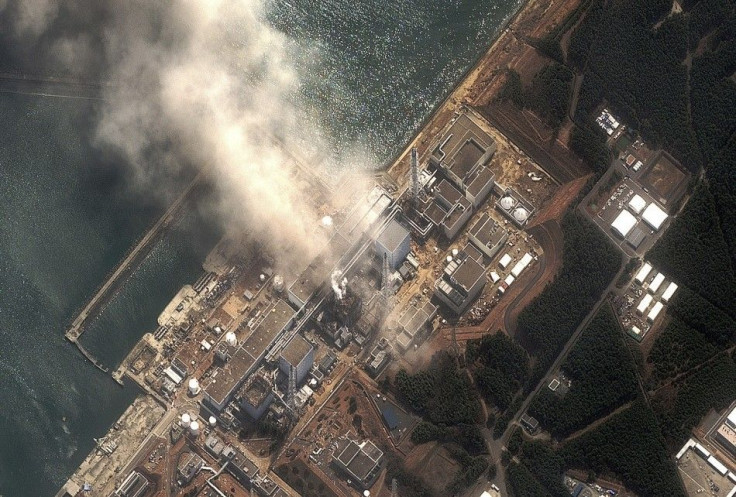Update from IAEA on Fukushima Nuclear Plant

Fukushima Daiichi Nuclear Accident Update (24 March 14:00 UTC)
Spent Fuel Pools at Fukushima Daiichi Nuclear Power Plant - Updated
Spent fuel removed from a nuclear reactor is highly radioactive and generates heat. This irradiated fuel needs to be stored for one to three years in pools that cool the fuel, shield the radioactivity, and keep the fuel in the proper position to avoid fission reactions. If the cooling is lost, the water can boil and fuel rods can be exposed to the air, possibly leading to severe damage and a large release of radioactive materials.
Nuclear power plants must replace fuel every one to two years, and the Fukushima Daiichi reactors typically remove about 25 percent of the reactor's fuel -- to be replaced with fresh, or unirradiated, fuel -- during each refuelling outage. The spent fuel, which is hottest immediately after it is removed from the reactor, is placed in the spent fuel pool until it is cool enough to be moved to longer-term storage.
The concern about the spent fuel pools at Fukushima Daiichi is that the capability to cool the pools has been compromised. See diagram below for location of the pool in each reactor building.
Here is a summary of spent fuel conditions at Fukushima Daiichi nuclear power plant, based on documents and confirmed by Japanese officials:
Unit 1
Unit 1 experienced an explosion on 12 March that destroyed the outer shell of the building's upper floors. No precise information has been available on the status of the spent fuel pool.
Unit 2
Precise information on the status of the spent fuel pool was unavailable in the days following the earthquake, but Japan's Nuclear and Industrial Safety Agency began to release temperature data on 20 March:
20 March, 23:00 UTC: 49 C
21 March, 05:25 UTC: 50 C
21 March, 21:20 UTC: 51 C
22 March, 02:20 UTC: 53 C
22 March, 06:30 UTC: 50 C
22 March, 19:20 UTC: 51 C
23 March, 00:00 UTC: 51 C
23 March, 06:00 UTC: 51 C
23 March, 16:00 UTC: 52 C
24 March, 00:00 UTC: 47 C
Workers conducted an operation to spray 40 tonnes of seawater to the spent fuel pool on 20 March, and they added another 18 tonnes on 22 March.
Unit 3
Unit 3 experienced an explosion on 14 March that destroyed the outer shell of the building's upper floors. The blast may have damaged the primary containment vessel and the spent fuel pool. To address these concerns, authorities began spraying water into the building, first by helicopter on 17 March and then by fire trucks and other vehicles through 22 March. Starting 23 March, seawater was injected into the spent fuel using the cooling and purification line. By midday 24 March, 4-5 tonnes of seawater had been injected through this line.
Unit 4
This reactor was shut down 30 November 2010 for routine maintenance, and all the fuel assemblies were transferred from the reactor to the spent fuel pool, before the 11 March earthquake. The heat load in this pool is therefore larger than the others.
On 14 March, the building's upper floors were severely damaged, possibly causing a reduction of cooling capability in the spent fuel pool. Emergency workers began spraying water into the building on 20 March, and have continued daily since then. On 22 March, workers began using a concrete pump truck that can deliver water more effectively, placing 150 tonnes of water on 22 March and 130 tonnes on 23 March.
Units 5 and 6
Instrumentation at these reactors began to indicate rising temperatures at their spent fuel pools starting on 14 March. Three days later, Japanese technicians successfully started an emergency diesel generator at Unit 6, which they used to provide power to basic cooling and fresh-water replenishment systems. Workers created holes in the rooftops of both buildings to prevent any hydrogen accumulation, which is suspected of causing earlier explosions at Units 1 and 3.
A second diesel generator came online on 18 March, and the next day, the higher-capability Residual Heat Removal (RHR) system recovered full function. External power was restored to Units 5 and 6 on 22 March. Temperatures in the spent fuel pools of Units 5 and 6 have gradually returned to significantly lower temperatures, although the Unit 5 pool temperature increased somewhat on 23 March after pumps for the RHR system were stopped when the diesel generators were removed from service.
Common Use Spent Fuel Pool
In addition to pools in each of the plant's reactor buildings, there is another facility -- the Common Use Spent Fuel Pool -- where spent fuel is stored after cooling at least 18 months in the reactor buildings. This fuel is much cooler than the assemblies stored in the reactor buildings. Japanese authorities confirmed as of 18 March that fuel assemblies there were fully covered by water, and the temperature was 57 ?C as of 20 March, 00:00 UTC. Workers sprayed water over the pool on 21 March for nearly five hours, and the temperature on 23 March was reported to be 57 ?C.
© Copyright IBTimes 2024. All rights reserved.





















